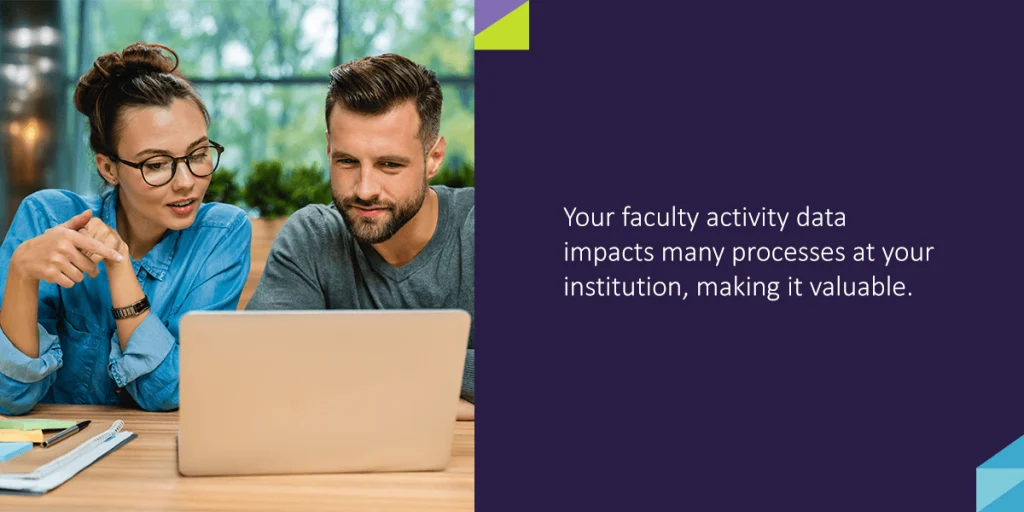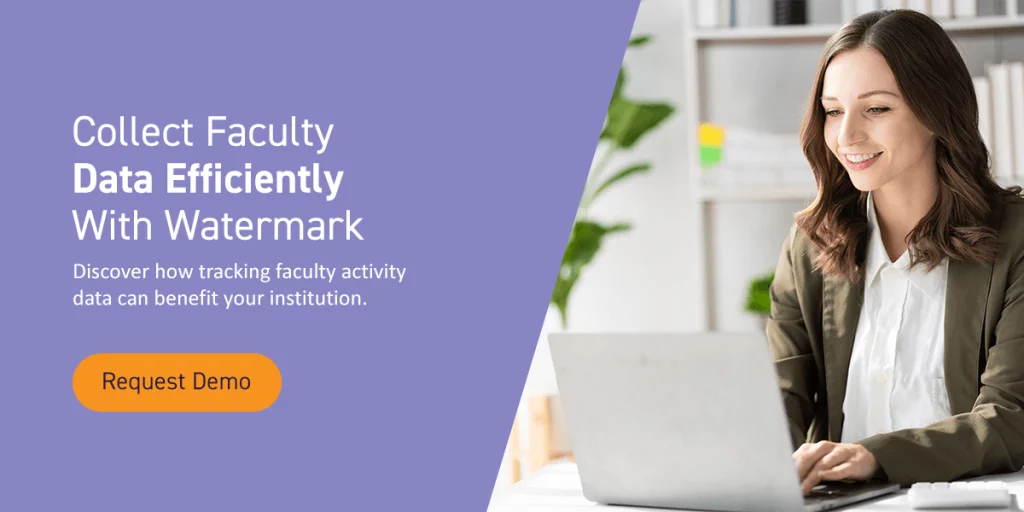Is your institution’s adoption of Faculty Success in the doldrums? These tips will help you pick up the pace.
There are many benefits to implementing change slowly and methodically. Yet, in some situations, it may be necessary to pick up the pace. For example, a university’s strategic goals might change, leading to a focus on online faculty reporting, or an environmental situation like the pandemic might require your institution to adopt new systems almost overnight. In these cases, how can those responsible for implementation accelerate faculty’s adoption of the new online system?
At the University of Southern Mississippi, moving Faculty Success (formerly Digital Measures) from the back burner to the top of their priority list was prompted by the arrival of a new provost. “My boss, the provost, wanted us to have a good, robust launch and get some benefit out of having Faculty Success,” said Dr. Douglas Masterson, Professor and Senior Associate Provost for Institutional Effectiveness at USM. “That was my marching order, and we made that happen within about a year.”
Like USM, Middle Tennessee State University had used paper binders and spent years shuffling paper back and forth for faculty reporting. They moved to Faculty Success for efficiency and to align their reporting process with their mission. “But we also (wanted to use it) for reporting for accreditation and for saving time,” said Dr. Joey Gray, Professor, Provosts’ Fellow, Faculty Success, at MTSU.
Why are faculty activity data and reporting important?
Faculty complete many essential operations and functions around campus that go beyond teaching. Their required service to their institution might manifest through researching, publishing, sponsoring student organizations, or advising students. With faculty spread over numerous departments and colleges, it can be challenging to collect and manage this data. However, this information has several vital functions, including:
- Understanding campus activity: When professors and faculty run various campus activities, collecting and understanding faculty activity reports can give you an overview of what happens on your campus. Administrators get a breakdown of how professors use their time and allocate their service requirements.
- Supporting annual reviews: Because professors have service requirements they must fulfill for their institution, activity data and reporting can create more accurate background needed for annual reviews. Administrators and department heads reviewing annual performance with professors and faculty can better understand their annual accomplishments and progress to give better feedback and set more actionable goals.
- Driving stronger decisions for tenure: Administrators have many factors to consider when deciding which professors and faculty members receive tenure in a given year. Their service commitments and campus contributions show faculty members are dedicated to your campus and have added to the academic community, making them stronger candidates. Activity data ensures that your administrators have the essential information they need to make accurate decisions for awarding tenure.
- Streamlining accreditation reporting: Your accreditation status tells potential students, families, and donors that your school meets third-party standards for educational quality. Your professors and their services can support your accreditation status by showing how they assist students, provide excellent education, and contribute to the overall academic community. Access to faculty activity data can streamline the self-assessment aspect of accreditation processes for increased accuracy and efficiency in reports.
Your faculty activity data impacts many processes at your institution, making it valuable. Faculty activity databases and tools can provide professors and administrators with better access to this data, enabling individuals to access and use this information to support decisions and better chart goal progression.

5 ways to jump-start acceptance
In a recent webinar, Masterson and Gray shared their tips for getting faculty to adopt Faculty Success within a short timeframe. When faculty support your technology adoptions, they can better optimize its features and benefits, so you get the most from your investment.
1. Let faculty know the end goal
At many institutions, faculty receive a high number of requests for information. Remind them that they will be able to enter this information one time and then use it infinitely in the future. Faculty who know what the purpose and desired intention of new tools are can be more open to learning new features and processes. When explaining the end goal to professors, highlight the impact this will have on their daily and annual processes.
2. Keep requests modest
It might seem counterintuitive to ask less of your faculty when trying to get their data online. Yet, both Masterson and Gray said that keeping their requests modest helped them gain acceptance. Many faculty at USM had 20 years’ worth of data on their CVs, but Masterson only asked for data from the previous two years. Once they saw the system’s benefits, many faculty proactively entered more than the minimum.
3. Be clear about the data types you need
USM asked faculty to include only their high-impact practices and their syllabi; entering relevant supporting information for their class or service activities was optional. MTSU let their faculty know that they didn’t have to upload their entire CV. Instead, Gray encourages people to upload specific sections of their CVs, such as their research publications.
4. Import data on behalf of the faculty
Import as much data as you can to reduce your demands on faculty. USM imports information from its human resources department and Center for Faculty Development, including research, service, creative activities, and mentoring. They then invite faculty to add more details if they so desire.
5. Emphasize the perks
The more faculty see what’s in it for them, the more likely they are to use the system. Don’t forget to mention these bonus benefits:
- Easier to highlight faculty accomplishments: University administration can use the data to generate reports that highlight faculty accomplishments, which in turn can be used by university communications offices to identify faculty work they can use in news articles.
- Easy access to student evaluations: By integrating Faculty Success with Course Evaluations & Surveys (formerly EvaluationKIT), faculty can see teaching evaluations from students on the Faculty Success platform.
- Easy to update their faculty records: Faculty have online access to their information from human resources and can easily update their records.
- Faculty can update their web profiles often: Faculty can control the things they display on their faculty web profile in (close to) real time, and Faculty Success makes it possible to automate these updates, which also benefits IT.
Collect faculty data efficiently with Watermark
Your faculty’s ability to enter data manually can take time away from other essential processes, like working with students or developing their academic research. Instead, the right technology adoption can make internal institution processes more efficient and eliminate mistakes caused by manual data entry.
Watermark offers Faculty Success, , which automatically uploads and updates faculty activity data as they complete various service requirements. Automatic data entry improves data reliability and accuracy, so administrators and department heads can better trust available information. Increased access to activity data gives administrators a deeper understanding of campus activity and professor performance, so they can apply information as needed across processes, from tenure awarding to accreditation reports.
Request a demo today today and discover how tracking faculty activity data can benefit your institution.
















































































































































































































































































































































































































